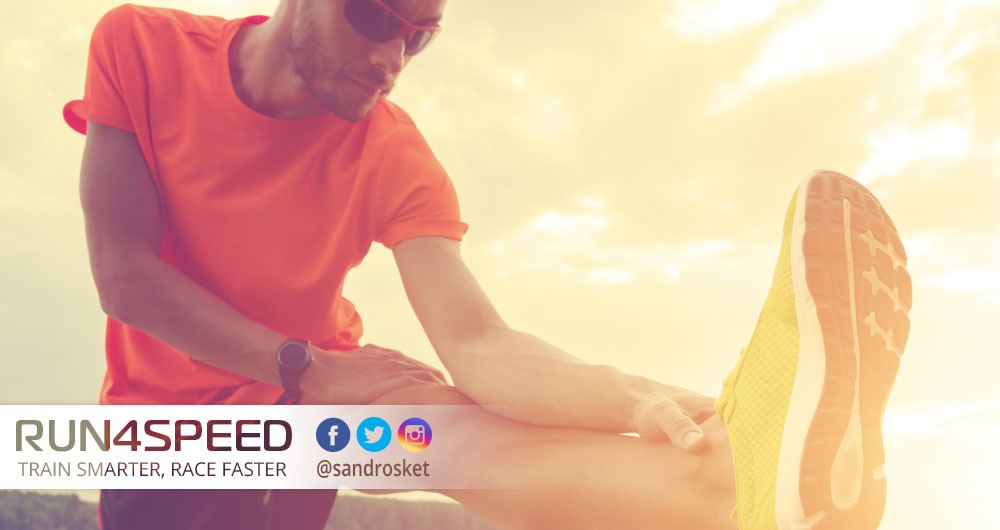Stretching for Runners: Do’s and Don’ts
Stretching for runners has been one of the most controversial topics lately. One the one hand there are books being sold such as ‘Yoga for Runners’, and on the other hand, recent research has demonstrated that flexibility can reduce muscle tension, and therefore affect performance negatively. In this article, you will find the answers to optimize your flexibility specific to running.
“Range of motion and muscle tension are direct opposites.”
THE CAVEAT OF FLEXIBILITY
Unlike strength and endurance, when it comes to flexibility more is not necessarily better. So before you sign up for the next Yoga class trying to bend your leg behind your neck consider the actual effect it can have on your running performance. Research has repeatedly shown that even static stretching before running hampers running economy by reducing muscle tension.
On the flipside, you will need sufficient range of motion to ensure a smooth, uninhibited stride. Most of us are rather sedentary when we are not running, such as sitting for extended amounts of time in the office. Hence, when we finally get to the park or running track, we expect our bodies to suddenly shift gears from small movements throughout the day towards long strides during our run.
A recent article published in the Strength & Conditioning Journal, concludes that the demands on flexibility differ greatly from one joint to the next. Tight hip flexors reduce the range of the important push-off phase, whereas tight hamstrings actually contribute to a quicker toe-off. Paula Radcliffe, the world record-holder over the women’s marathon, raced her best when her sit and reach test was at its ‘worst’.
The stretch-shortening-cycle (SSC) is also active in our calf muscles, namely the soleus and gastrocnemius. Again, a certain tension is necessary to take advantage of ‘free energy return’. But tight calves can also put tremendous pressure on the Achilles tendon. The sweet spot of flexibility for running is to be found somewhere in between the two extremes of stiffness and overly loose muscles.
THE IDEAL STRETCHING ROUTINE
Never stretch cold. The first activity of every workout is a warm-up jog for a minimum of 10min. Now whether you stretch before your running workout is a personal choice. If you happen to be quite tense, by all means do some static stretching. But don’t hold each stretch for more than 3 – 4 seconds prior running as not to reduce your muscle tension. A longer stretching session comes after your workout.
Next, do a series of running drills. Most drills exaggerate the running motion and therefore stretch your muscles dynamically. They also increase the bounce in your stride. Hence, drills come with a double benefit. You can copy some of the drills sprinters use when you happen to visit the track. Follow up with a few 100m strides at 1500m race pace. This, too, will increase your range of motion.
Once you have completed your main set and done a 5 – 10min cool down, it’s time to stretch statically. (Actually, the very first thing should be a shake with a protein/carbohydrate blend to take advantage of workout induced elevated hormone levels.) Back to topic. Stretch each muscle group statically for 10 – 20 seconds including your core muscles, which should take no more than 10min of your time.
Additionally, you could schedule 2 extended, standalone stretching sessions per week. Either within 1 – 2 hours after running workouts or after a cross training session. Foam rolling and massage are also great ways to increase (or maintain) flexibility. Choose a setting that you’re comfortable in, such as a pool, terrace or your balcony. It’s also a great way to wind down from a stressful day.
The key takeaway from this article: Do an assessment of your current flexibility. Most of us are less flexible than we need to be, given our low-activity lifestyle at home or in offices. At the same time, the goal isn’t the kind of hyper flexibility that you may admire in a Yoga master. You’ll beat him in running. A healthy amount of stretching with consistency will go a long way.
5K Plans | 10K Plans | HM Plans
Sandro Sket, CSCS
Share this article


